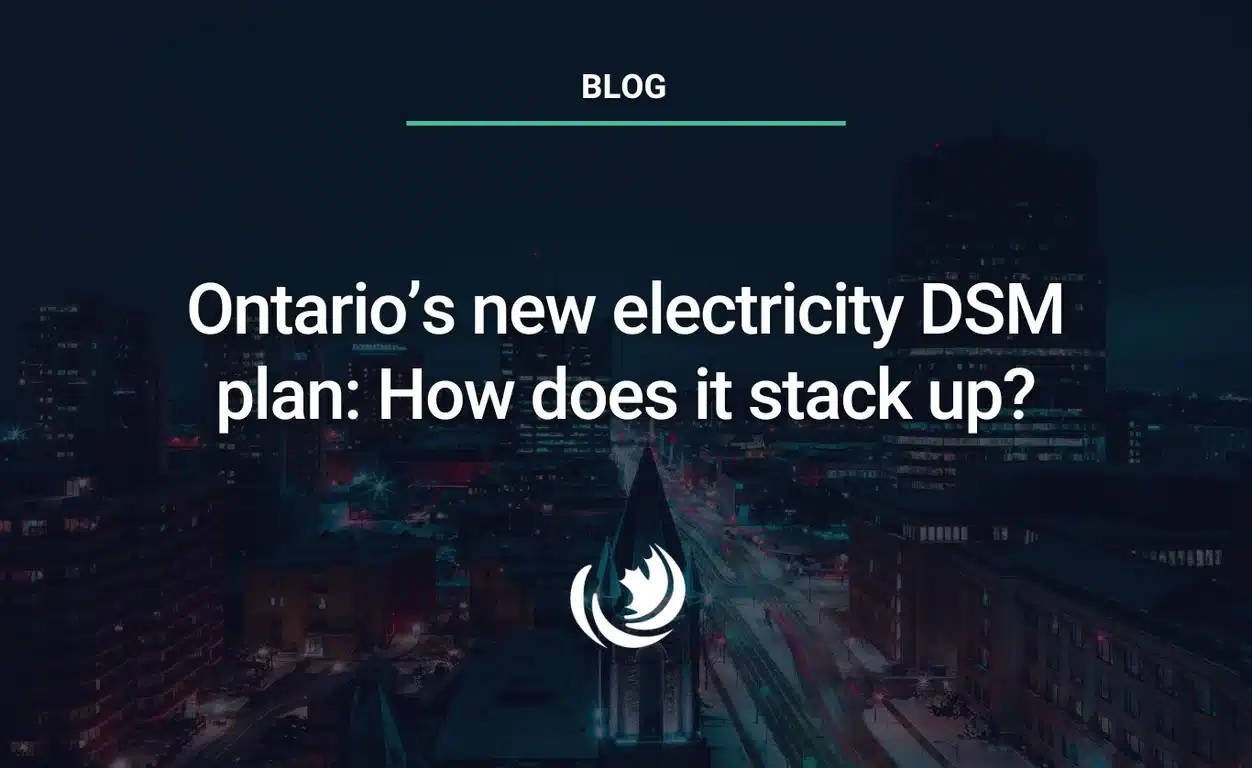Ontario’s New Electricity DSM Plan: How Does It Stack Up?

Ontario’s new 12-year, $10.9 billion electricity demand-side management (eDSM) plan aims to save 18 TWh of electricity and 3,000 MW of peak demand by 2036. It expands efficiency efforts by reinstating residential programs, supporting low-income and Indigenous communities, and incentivizing solar and energy storage.
While a step forward, Ontario still lags behind leading jurisdictions. U.S. states set far higher efficiency targets, and the plan falls short of its own maximum achievable potential. To improve, the province must increase savings goals, regularly update projections, and better align DSM with electrification and decarbonization strategies.
A Review of Recent Heat Pump Research and Initiatives for Canadian Policymakers

Pay People Instead of Power Plants for Clean Electricity
Co-authored by Efficiency Canada’s senior director of policy strategy, alongside Clean Energy Canada and the Canadian Climate Institute, this opinion piece argues that while new Clean Electricity Regulations permit ongoing use of natural gas for grid flexibility, a better approach is to harness households and businesses as “virtual power plants.” By shifting or reducing electricity use at peak times, using strategies like pre-cooling with smart thermostats or upgrading insulation, participants save on energy costs while boosting grid stability. Paying people to save energy is more cost-effective than continuing to rely on gas-fired plants.
Trump’s Energy Rollbacks and the Impact on Canadian Consumers
Donald Trump’s push to weaken U.S. energy efficiency standards could reduce product choices for Canadian consumers, as manufacturers may prioritize the larger American market. Brendan Haley, Policy Director at Efficiency Canada, was quoted emphasizing that while an “anti-backsliding” rule may prevent immediate rollbacks, legislative changes could still undermine efficiency progress. He also pointed out that Canada has led on efficiency before, banning incandescent light bulbs years ahead of the U.S. and setting higher furnace standards, and can continue to do so. However, with manufacturers hesitant to produce more efficient products for a smaller market, maintaining strong Canadian standards may require proactive leadership and policy action.
Deep Retrofit Accelerator Initiative: Open Application
The Government of Canada has opened a second call under the Deep Retrofit Accelerator Initiative, offering $8 million over two years for capacity-building projects. Eligible proposals must reduce barriers to deep retrofits and advance market transformation, focusing on at least one of the following: developing tools for financing deep retrofits, strengthening workforce skills and capacity, or creating robust business cases. The application window remains open until February 12, 2025.
Rural Communities Face Climate Challenges but Lead with Solutions
Rural Canadians are disproportionately impacted by climate change, facing higher energy costs, unreliable power, and limited access to low-carbon options like electric vehicles. Brendan Haley, policy director at Efficiency Canada, highlights that “30 per cent of rural households spend two times more than the average on energy,” making affordability a major concern. He emphasizes that pooling resources, such as investing in solar power or home energy storage, can make sustainable choices more practical.
New Brunswick Adopts 2020 National Building and Energy Codes
The Province of New Brunswick has officially adopted the 2020 National Building Code of Canada and the 2020 National Energy Code of Canada for Buildings at energy tier 2, with full implementation set for April 1, 2025. These updated codes set higher energy efficiency standards for new construction and renovations. The applicable code edition for any project will depend on when a substantially complete application is submitted, as determined by the building inspector. Additionally, phased permits may continue under the previous code at the inspector’s discretion.
New Report Highlights Solutions to Energy Poverty in Alberta
A new report from the Pembina Institute cites some of our work in outlining how Alberta’s governments and utilities can help low-income households escape energy poverty while driving economic growth. The report finds that 6% of low-income Albertans struggle with high energy costs, often due to inefficient housing. Investing $212 million annually in deep retrofits could lower energy bills, improve resilience, and stimulate $850 million in GDP growth, creating 42,700 long-term jobs by 2050. Key recommendations include launching a province-wide retrofit program, establishing publicly funded deep retrofits, and implementing utility demand-side management policies.
Ontario Launches New Energy Efficiency Programs to Cut Costs
The Home Renovation Savings Program officially launched on January 28, 2025, as part of Ontario’s recent $10.9 billion, 12-year investment in energy efficiency. The program offers rebates of up to 30% on home upgrades, including new windows, doors, insulation, heat pumps, rooftop solar panels, and battery storage. Ontario is also expanding the Peak Perks program to provide small businesses with incentives for installing smart thermostats. By 2036, these programs are expected to reduce 3,000 MW of peak demand, saving $12.2 billion in electricity costs. Alongside these new initiatives, the province continues to support 12 Save on Energy programs, helping businesses, municipalities, low-income households, and First Nations communities improve energy efficiency and lower bills.
Green Development Standards Face Legal Challenge in Ontario
Fifteen municipalities in the Greater Toronto Area have adopted green development standards to improve building efficiency and climate resilience. However, in November 2024, the Residential Construction Council of Ontario (RESCON) launched a legal challenge against Toronto’s Green Standard (TGS), arguing it conflicts with the Ontario Building Code and impacts housing affordability. The Atmospheric Fund (TAF) refutes these claims, highlighting that cities have clear legal authority to set green standards, which do not slow housing development or contradict provincial regulations. Green standards improve building quality, reduce utility costs, and help cities meet climate targets. With municipalities working to harmonize standards across the region, environmental advocates continue to push for strong local policies that enhance affordability, resilience, and sustainability.
